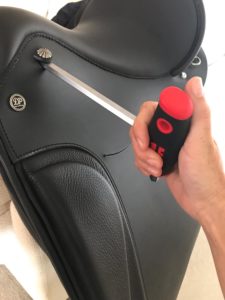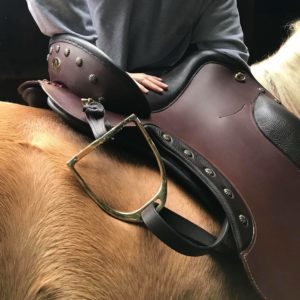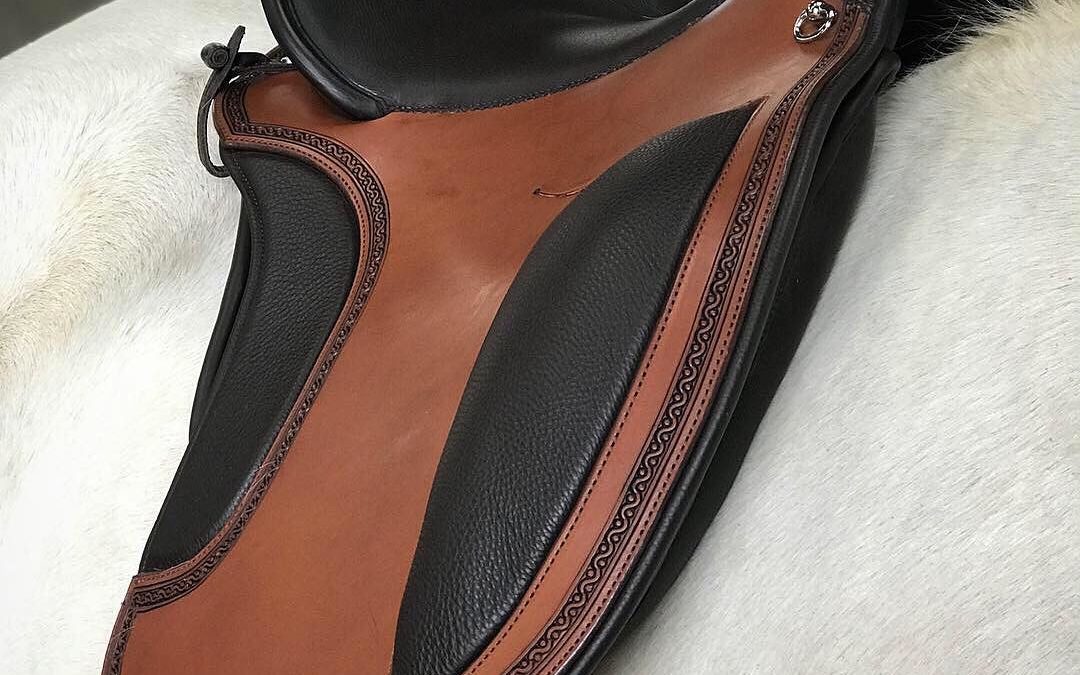Choosing a new saddle for your horse is incredibly exciting - and so it should be! Along with the excitement, we may also feel a little bit anxious about finding the perfect fit. I like my clients to know what they should be looking for and helping them to feel confident when fitting their saddles to their horses. With more online and remote saddle fittings, I want to provide the best guide possible for those looking for a new Deuber & Partner saddle, or simply adjusting their current ride! Whether you are looking for English, Western, Baroque saddles, UK, Europe or Worldwide - I'm happy to help.
The whole process can be made less daunting with a simple guide and easy to follow instructions. So here goes!
Saddle length. Your saddle should sit comfortably behind the shoulder and not sit upon or past the last floating rib. Saddles which are too long may cause discomfort, upset and behavioural issues in a horse.
Channel width. It is important that the channel width (the space between the two cushioned panels, which sit on your horse's back) isn't too narrow. A saddle which is too narrow in the channel can cause the saddle to pinch at the withers or put uncomfortable pressure on the spinal processes. An incorrect channel width may cause restrictions in movement, promote poor posture and notable stiffness.
Gullet width. Put simply, if the gullet is too wide, the saddle will tilt forward, if it is too narrow, the saddle will tilt backwards. Either of these outcomes will cause improper rider balance and can interfere with the horse's movement.
To check the gullet width is correct, you can check for even pressure from the top of the panel, starting by the withers, to the bottom.

How?
- Check the saddle's panel seam is running parallel to your horse's shoulder.
- Slide your flat hand between the panel and your horse to check for an even pressure.*
- Too much pressure at the top of the panel indicates the gullet is too wide and needs to be narrowed.
- Too much pressure at the bottom means the gullet is too narrow and needs to be widened.
- Use your Allen Wrench key to narrow or widen your saddle from extra narrow to extra wide. Simple!

- Check down the gullet by placing one hand at the highest point of the tree fork and feel down the gullet to the centre of the tree, to the mid point of the saddle, whilst applying gentle downward pressure in the seat area. Repeat a few times. Allow 1-2cm of space as a maximum under the seat area. This gap allows the back to come up when engaged. Any more than 1-2cm would be classes as bridging and is too much. There should be no pinching or bridging.
* Please note: the girth should not be done up whilst checking the gullet and checks should be carried out on the ground, not from the horse's back. Make sure your horse is standing square with their head in a straight, relaxed position (think ears at withers height!).
Balance. If the gullet is correctly adjusted for an even pressure down the panels and with a nice fit down the length of the saddle, the saddle should be evenly balanced in the seat. When looking at the saddle from the side, the seat should neither tilt forward nor backwards. It should be horizontally balanced. If it is not balanced, recheck and adjust the gullet.
Saddle Movement. Muscle asymmetry and rider imbalance are two common causes of movement in the saddle to the left or the right. I can offer advice and training for muscle asymmetry to aid the best saddle fit. Not only will the training improve your horse's muscle tone to help with saddle fit, other benefits include improvement in behaviour and rider/handler bond. This is my recommendation for a long term solution over using shims. Once balance is achieved in the horse's body, maintenance is easy for optimum saddle fit. If the saddle moves from side to side, this can also be an indication of the flocking settling in new saddles and will need narrowing slightly. A brand new saddle will need narrowing after approximately 1-3 months of riding on average.
Flocking. Deuber & Partner saddles boast a soft wool flocking which warms and conforms to horse and rider. They can be flocked as required. Reflocking is usually required after around 2000 ridden miles - wow!
Still looking for your dream saddle? English, Western & Baroque saddles UK, Europe & Worldwide - see here!
